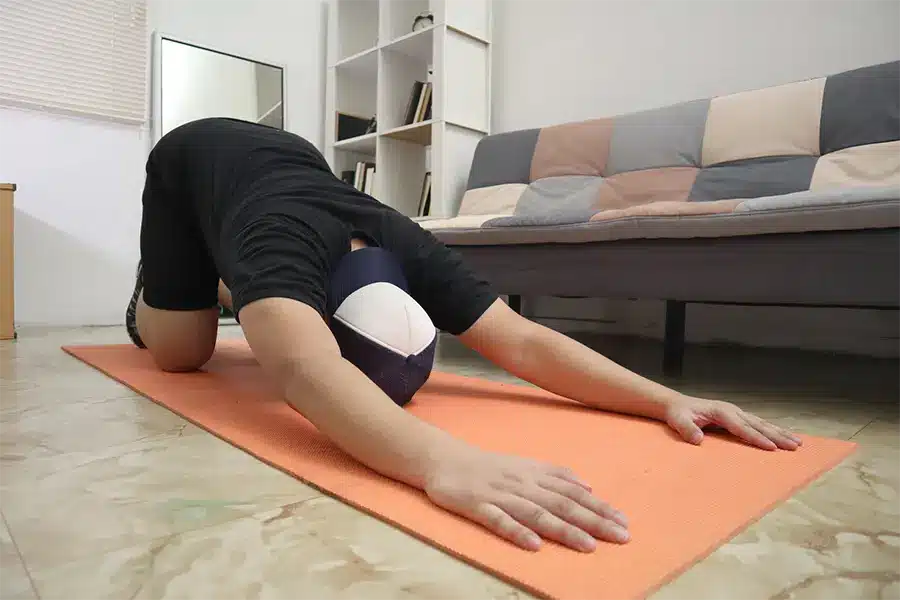
5 Best Stretches for Lower Back Pain
Lower back pain is an extremely common condition that many adults experience, especially as they age. However, lower back pain can affect anyone, despite their stage of life and fitness levels. Whether your lower back pain is keeping you from running marathons or simply chasing your toddler, finding the root cause of your lower back pain is an essential step in returning to a pain-free life. Along with consulting with a spine specialist about your lower back pain, there are plenty of stretches and techniques that can help alleviate this pain from home.
What Causes Lower Back Pain?
Lower back pain has a variety of root causes, including a traumatic injury, improper ergonomics and lifestyle factors, weight gain, stress, pregnancy, and natural degeneration of the spine with the aging process. Common lower back spine conditions include a herniated disc, degenerative disc disease, spinal stenosis, and sacroiliac joint (SI) dysfunction. If the pain prevents you from completing everyday tasks and activities, it is advised that you consult a spine specialist to be evaluated and determine the appropriate treatment options.
Best Stretches for Lower Back Pain
Stretching can be very beneficial for those experiencing pain and discomfort in their lower back. Stretching can help elongate muscles, relieve tension, and reduce the compression on your nerves, which alleviates pain. It can also improve blood circulation in the muscles and joints, which further relieves tension and stiffness. Stretching also enhances the spine’s natural range of motion by improving flexibility. Here are some stretches that help promote healing and relieve pain in the lower back:
Reclining Pigeon Pose
- Lie on your back, bend your knees, and place your feet flat on the floor.
- Lift your right leg and rest your right ankle on your left knee.
- Grasp the back of your left thigh and gently pull towards your chest.
- Hold for 20-30 seconds and switch sides.
This stretch targets your glutes, hamstrings, and back, helping to relieve tension and pressure on these muscles.
Seated Forward Fold
- Sit on the floor with your legs extended straight in front of you.
- Slowly bend forward at the hips, reaching for your toes or shins.
- Hold for 20-30 seconds, breathing deeply.
This stretch targets your hamstrings and back muscles.
Knee to Opposite Shoulder Stretch
- Lie on your back with your legs extended.
- Bring your right knee towards your chest.
- Use your hands to pull your knee across your body towards your left shoulder.
- Hold for 20-30 seconds and switch sides.
This stretch promotes flexibility and mobility in your lower back.
Cat-Cow Stretch
- Start on your hands and knees in a tabletop position.
- Inhale and arch your back, lowering your belly towards the floor (cow pose).
- Exhale and round your back towards the ceiling (cat pose).
- Repeat 10-15 times, moving slowly with your breath.
This stretch relatives tension in your back while promoting flexibility and mobility.
Child’s Pose
- Kneel on the floor and sit back on your heels.
- Extend your arms forward and lower your chest towards the floor.
- Hold for 20-30 seconds while breathing deeply.
This stretch promotes relaxation and stretches the muscles in your lower back and hips. With all of these stretches, it is very important to practice good posture and slow breathing to help promote relaxation. It is also important to hold these stretches to promote flexibility. Incorporating these stretches and additional mobility exercises have been shown to significantly alleviate lower back pain. Lower back pain can have a variety of root causes, which makes it very important to consult a spine specialist if your pain is persistent over a prolonged period of time. Typically patients experience relief from these symptoms non-surgically through rest, specialized stretching, anti-inflammatory medication, spine-specialized physical therapy, and steroid injections; in more severe cases surgical intervention could be necessary to address the underlying issue. Consult a spine surgeon to determine the appropriate course of action for your specific condition.
Topics covered
About the Author
Featured Resources
Insights to Achieve a Pain-Free Life



